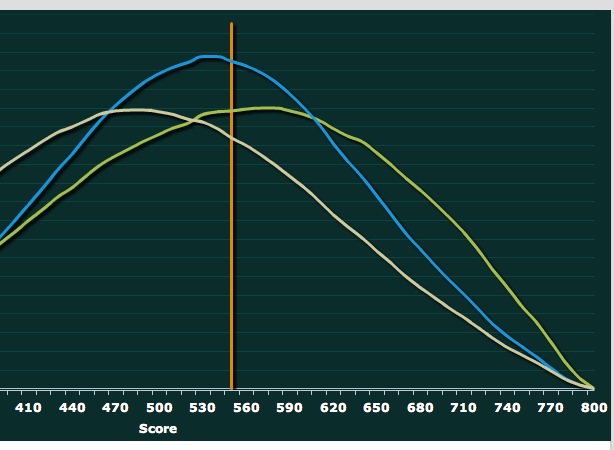In differential calculus an inflection (or inflexion) point is the point on a curve where the curvature changes sign and therefore shape.
Lives and careers have inflection points too: those moments where, due to events or new insight, suddenly everything is turned around or looks different.
Inflection points can be “achievements” but they don’t need to be. Often they are mixed, bitter-sweet moments of self-understanding and emotional arrival. Communicating these moments is key to convincing Adcom of your unique, personal, individual motivation for MBA study and beyond.
Sometimes when I talk to clients at the profiling stage of their application — when we sift through their past and present scouring for admissions value — they will blow right past an inflection point such as a change of college major, or death of a parent, or visit to the national gallery in Berlin (or whatever it may be) and I have to slow them down to fully explore and capture the value therein.
Due to confidentiality, I can’t tell their stories, but I did notice an example used recently on the Businessweek MBA Journal site where a now-current INSEAD student shares his “road-to-Damascus” moment:
“A favorable USD/GBP exchange rate and good salaries enabled us to enjoy a hedonistic lifestyle in New York, which included fancy dining, live music and sporting events, and parties on most nights. Yet, during all of this, I witnessed an act of kindness that changed the way I view the world and my aspirations. This moment of humanity would ultimately drive me to pursue an MBA at INSEAD.
“Midway through my training in New York, my friends and I went to see a Yankees baseball game. We caught the subway to return home and sat down next to a homeless man named Sam. Two stops later, another homeless man, J, boarded and sat next to Sam. They proceeded to talk and we overheard parts of the conversation. It became apparent that Sam and J had never met before. Then, Sam asked J if he would like to share some dinner, and J gladly accepted. Sam pulled out a tin of Vienna sausages and some dry crackers, which they shared. We watched all this and lumps gathered in our throats. Sam had no wealth and bleak prospects, yet was willing to share his food with a complete stranger. Would we have shared something worth as much to us with another stranger?
“This act of generosity humbled my friends and me…. I was inspired to seek more in life than those parties and materialistic pursuits. I didn’t want to waste my precious time, and I wanted a challenge. I wanted to make my mark on the world.”
Powerful stuff. Note that you don’t need a bleeding heart story to have an inflection point, or to get into business school. But you do need to be sensitive to the real inflection points in your life, which by definition will be highly individual to you, and how they have shaped your aspirations. This is the key to being real and therefore being believed when you share your goals with the MBA Admissions Committee in your application essays or interview.

